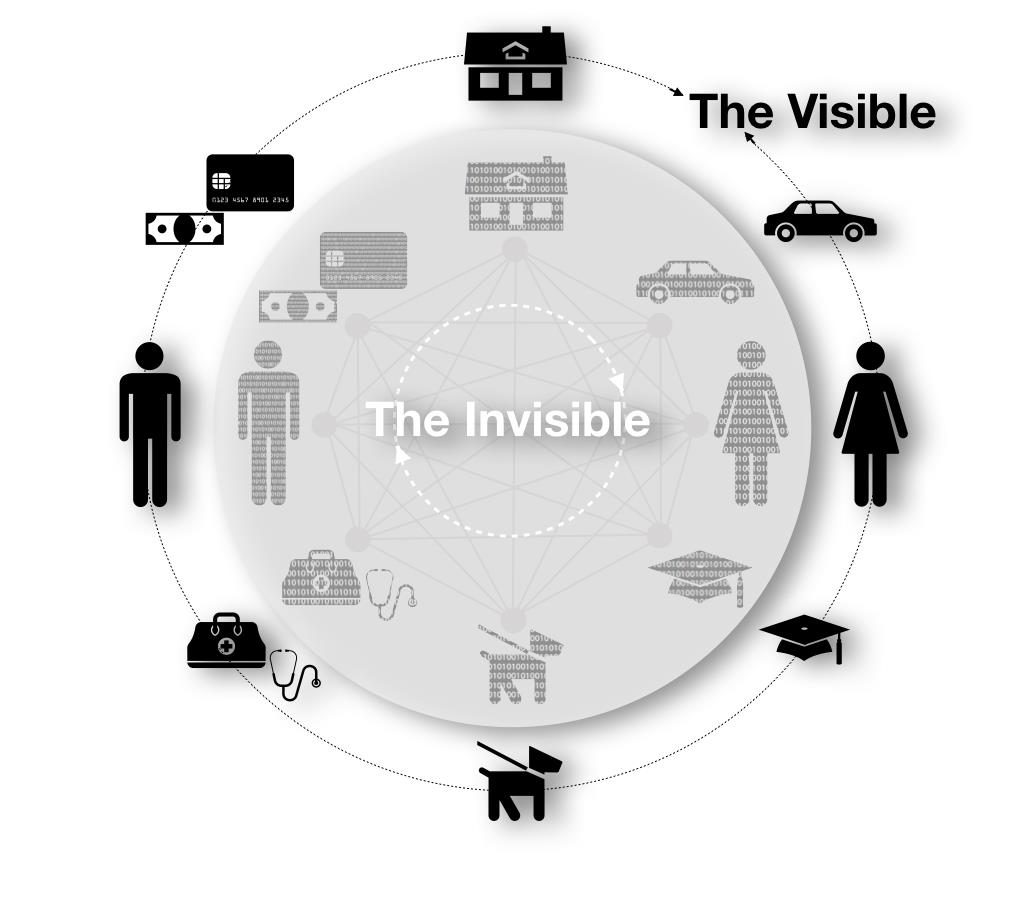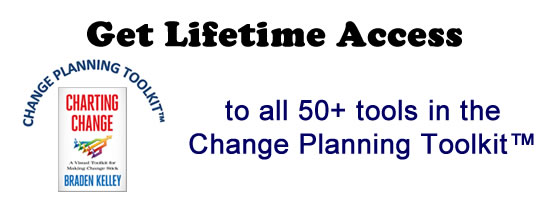The Future is Invisible

The world is at the precipice of one of the most dramatic shifts in history: the transition from an industrial society to one that is based on a deep understanding of an entirely new form of knowledge capital, behavior—our behaviors as well as those of the intelligent machines that we are building.
The industrial model on which we have built our economy, businesses, and society was based on a mechanized and orderly view of the world. It anonymized us as members of faceless markets. The speed of its growth created enormous friction from complexity and regulations, and had a deep impact on our ecosystems by straining natural resources.
The nineteenth and twentieth century industrial era created enormous engines of mass production which were intended to develop and deliver products and services that could be easily replicated for mass markets. It worked. Since 1800, population grew from one billion to seven billion people. Global per person GDP grew from one thousand six hundred sixty-nine dollars to over ten thousand dollars. In the USA, per person GDP rose from two thousand four hundred dollars to over sixty thousand dollars, a twenty-five-fold increase.
The one-size-fits-all mass production approach to manufacturing allowed us to scale transportation, housing, consumerism, commerce, healthcare, education, and social programs at a rate the world had never seen.
But the mechanized industrial era model is reaching its limits. It has become bloated and inefficient and is no longer a viable or sustainable model with which to support ten billion people. We need to shift from a rigid mechanical approach of “solving†problems to one that can deal with the behaviors of emergent and uncertain systems that are constantly evolving and fundamentally “unsolvable.â€
Don’t get me wrong; I’m not proposing that industrial models should be discarded en masse. Improvements in automation, production, supply chains, distribution, and transportation will continue to incrementally increase productivity, but expecting incrementalism and the same approaches we’ve used to solve the problems of the last two hundred years to continue for another two hundred is a recipe for economic, ecological, and social collapse.
At the core of this transition, are two sets of disruptors: new technologies, such as artificial intelligence (AI) and autonomous devices which will be able to understand the behaviors of all things at a level of detail humans never could; and new ways of thinking about some of the most basic frameworks of the industrial era: how we problem solve; how we transport goods and people; how we protect our intellectual, real, and digital property; how we create hyper-personalized products and loyal brands aligned with our needs and values.
But here’s what’s unique about so many of the changes that are about to take place, and which we talk about in our new book, Revealing The Invisible, they are pretty much invisible. To see them requires peeling away layers of perceptions and assumptions that hide the underlying patterns which drive behaviors.
Unlike many of the great advances of the past two hundred years—the advent of flight, the automobile, the assembly line and factory automation, medical diagnostics and therapies—the most profound and revolutionary technologies and mechanisms for change over the next two hundred will be ones that we can’t even see. They will be embedded, buried deep inside of devices that will not look much different than they look today.
We will still have automobiles, trucks, buses, planes, boats, and trains. Computers will still run most of our businesses and processes. We will still buy and sell products and services online, in stores, and at the corner grocer. We will still live in homes and apartments and work in office buildings. Currency will still run global commerce. Companies will still issue equity to owners and investors. Factories will continue to churn out goods, focus on productivity improvements, and optimize global supply chains. And the chaos of an uncertain world will still loom large over all our decisions.
It doesn’t sound like the future we’d once been promised, does it? No flying automobiles to whisk us across town, no robot servants to pick up after us, no teleporters to zap us instantly from one continent—or planet—to another.
But stop and think about the trajectory of invention and the advances of the past sixty years. Along with the visible innovations we’re all familiar with, there have been an increasing number that are invisible: electricity, radio, the transistor, software, wireless, new chemicals, and genomics. These have all had a revolutionary impact on our lives and yet few of us would know a transistor if it landed in the palm of our hand, where, not coincidentally, you are holding a few hundred million of them right now.
The changes in our world are increasingly being driven by invisible innovations. In some cases, those innovations are powered by AI or learning machines that monitor their environment, adapt, and make myriad small decisions, as is the case with driverless cars. In other cases, those innovations result from observing and understanding patterns in our behaviors and those of the many natural and manmade systems that surround us. In almost all cases we are totally unaware of what’s going on beyond our line of sight. What changes is not necessarily what we see but rather the invisible that shapes what we experience.
So, why even bother revealing these invisible forces? Isn’t it enough to simply know that they work? After all, few of us know or care how a transistor works—it just does. We need to reveal the invisible because we’re no longer talking about mechanical devices that act purely on our instructions and have no awareness of us, that do what they’re told and no more than that. The sorts of technologies that we’ll be talking about have the capacity to develop an awareness of us and the context of their world. They can make decisions on their own that will have profound effects on our society, our businesses, and our lives. They will learn and evolve. They threaten to tread on some of our most sacred turf—our privacy—by revealing our most intimate thoughts and behaviors. In short, they will disrupt the world like never before.

Illustration 1.1 – The Invisible
When we talk about revealing the invisible, we are referring to the ability to understand the digital behaviors of not only ourselves but also of the people, devices, objects, and institutions we interact with. Each of these can have a digital-self or digital twin (the collection of its digitized behaviors) that interacts with other digital objects. The complex patterns of interactions among these objects may appear invisible or obscure to us, and radically different that the biases we have of how the visible world operates but algorithms and AI can easily understand the patterns they form and then predict future behaviors. We believe that the greatest value of innovation for the next one hundred years will come from understanding and leveraging revealing “The Invisible†on this illustration.
The good news is that none of this is a sudden shift; it has been and will continue to occur incrementally—at times with great fanfare, at other times to great protest—and sometimes in ways that are barely noticeable. For example:
- Autonomous vehicles will dramatically decrease the ecological impact of transportation, while creating unprecedented safety, mobility, and an entirely new in-car experience.
- Devices embedded with AI will anticipate our needs, predict illness, and improve our well-being.
- Hyper-personalized healthcare will match therapies to our individual genomes.
- Concepts such as brand loyalty will be turned on their heads as companies compete to find ways that they can use behavioral knowledge to prove their loyalty to each individual consumer.
- AI will begin to solve some of the most pressing and protracted problems of our time by identifying otherwise invisible patterns of behavior in the complex natural and manmade systems that surround us.
- The elimination of the friction in new digital ecosystems will transform rigid industrial age businesses into responsive, adaptive, customer-centered ecosystem experiences.
Does all this sound a bit far-fetched? Only to the degree that you discount our ability to recreate the world of the future. For instance, what would your reaction be if we were to tell you that within one hundred years the percentage of people employed in the knowledge economy would dwindle by 95 percent? Yet, that’s exactly what happened to agricultural employment in the USA over the last one hundred years, dropping from 38 percent of overall employment in 1900 to only 2 percent today, while agricultural output increased 2000 percent. Not impressed? What if we were to claim that the number of computer devices would increase by nine orders of magnitude within the next seventy years? Again, it seems absurd, and yet that’s exactly what’s happened over the last seventy years.
That is the sort of change that we are already laying the groundwork for: a journey into a future that will reshape business and society.
What determines how fast any of these ideas find their way into the mainstream of our world, our businesses, and our lives won’t be the underlying technologies, but our ability to embrace the new behaviors that they will bring. If history is any indication, that’s often sooner than we think.
Get ready to start revealing the invisible.
Excerpted from Revealing The Invisible: How Our Hidden behaviors Are Becoming The Most Valuable Commodity Of The 21st Century by Thomas Koulopoulos, George Achillias
Wait! Before you go…
Choose how you want the latest innovation content delivered to you:
- Daily — RSS Feed — Email — Twitter — Facebook — Linkedin Today
- Weekly — Email Newsletter — Free Magazine — Linkedin Group
 Tom Koulopoulos is the author of 10 books and founder of the Delphi Group, a 25-year-old Boston-based think tank and a past Inc. 500 company that focuses on innovation and the future of business. He tweets from @tkspeaks.
Tom Koulopoulos is the author of 10 books and founder of the Delphi Group, a 25-year-old Boston-based think tank and a past Inc. 500 company that focuses on innovation and the future of business. He tweets from @tkspeaks.
NEVER MISS ANOTHER NEWSLETTER!
LATEST BLOGS
Three things you didn’t know about credit cards
Photo by Ales Nesetril on Unsplash Many of us use credit cards regularly. From using them for everyday purchases to…
Read MoreFive CV skills of a business-minded individual
Photo by Scott Graham on Unsplash The skills listed on a CV help employers quickly understand your suitability for a…
Read More


